What is Microsoft Lync & Why Should I Care? A Non-Technical Introduction to Microsoft Lync
tl;dr:
Lync Is…
For Normal People
For Software Developers
Introduction
This is a non-technical introduction to Microsoft Lync. It’s designed for both Software Developers and also Normal People who are coming across Lync for the first time. Maybe you’ve just found you need to develop applications using Lync components, or you’ve turned up at work to find that someone’s taken your phone away and instead the Lync icon has appeared overnight in a Group Policy update. 
Or, maybe I gave you one of my new “What the F**k is Lync?” cards. Apologies if I shocked you, but that’s what I see in people’s eyes when I tell them what I do – even technical sorts such as other developers, startup founders, etc. So, I started handing out cards, pointing people to this post. Welcome!
I’ve been working at Modality Systems for over a year now, but I still find it hard to describe what I do. How do you describe Microsoft Lync in a way that everyone gets? It’s a hard one – partly because you only really “get Lync” after you start using it. It’s also frustrating because I (still) get really enthusiastic talking about Lync, and I want the other person to “get it” too. I’m going to try to describe Lync by talking about some of its features, some of the things it lets you do, and why it matters. Hopefully by the end of it, you’ll have a good feel for what Lync is. Maybe, you’ll be as excited about it as I was when I first heard about it.
Lync for Normal People
Messaging
Think Google Talk or MSN Messenger, and you’ll have a good starting point. They’re Instant Message clients: they let people send text messages to each other. Now imagine that everyone in your company had this, and you didn’t have to go and find their sign-in name or work out which platform they were on.
The Lync that most people see is similar to that – a desktop application that sits in the taskbar. It has a list of contacts, which you use to interact with different people in a variety of different ways. You can find other people just by typing in their name.
In Lync, you can send messages, use voice and video. You can also send files, and share your desktop (or just some applications within it) with other callers – either read-only or so they can control your keyboard and mouse. (good for IT troubleshooting!).
We abuse email in the corporate workplace – have you ever received an email with no body, and just a one-liner question in the subject? That’s an Instant Message in hiding. You might not think there’s much difference – except that now you have one more message in your Inbox, once more thing to read, process, delete. One more conversation tree of 50 mails between a handful of people discussing why the air-conditioning is set how it is, with the entire office copied in. You don’t want to come back from holiday to that lot.
There’s also a thing called Persistent Chat – which is like a chat room. You can dip in and out of it, talking about things. However, everything has a history. So, if you want to remind yourself how it came to be that lime green was chosen for the new company logo, you can go back and have look. Or, if someone new joins your team they can go back and get some back story.
Meetings
If you’ve used any of the online meeting services you’ll know that they’re useful, but there’s always some hoops to jump through: plug-ins to install, links to share out. And, of course, the monthly subscription fee. Or  maybe you’ve invested in a top-of-the-range AV meeting room, completely with microphones, video and a fat network connection, which lets you talk to anyone else. Well, anyone else with compatible kit anyway.
Well, I have my laptop, a Bluetooth headset and a cheap webcam. This is what I can do from anywhere:
This is us having a Team Scrum. I can’t remember why the others were at home, but it didn’t really matter.
File Sharing, PowerPoint collaboration, Desktop Sharing & control: all things we do regularly when we’re not in the same room (and sometimes even when we are!).
I was recently in a group conference about Lync where the presenters were (I think) based at Microsoft, Redmond and the attendees were developers from all over the world. We communicated in a Lync group conference session. If you’re presenting to a lot of people, you’ll appreciate attendee-mute and Q&A tools:
The pain of setting up online meetings and the time it can take is one of the reasons people tend not to use them. Because Lync is deeply integrated in the Office suite, but especially Outlook, online Lync meetings can be set up easily from within Outlook.
How easily? Like this:
For people outside your company, you can either give them a URL for the Lync Web Client (which is a URL at your company’s domain which lets them join as if they had Lync), or you can provide them with dial-in numbers so they can join via phone. It’s a much more professional appearance than having to give out a branded URL from an online meeting provider.
Presence
Lync has been built with professional communication and collaboration in mind.
One of the really big things about Lync is Presence. You’re probably already aware of presence in other instant messaging clients – you can show yourself as being Available, Away, Busy, etc. There’s two things which (I think) make presence in Lync really useful. The first is that ‘Presence’ includes not only your actual status, but your location and an optional message about what you’re doing.
The picture shown you what my Lync contact card looks like to anyone else in my company. Straightaway, you can see I’m available – the green bar on the left tells you that. The bar comes in yellow and red as well – giving an instant recognisable indication of status. Secondly, you can see what I’m doing, and also where I am. The first time I connected to my home network I typed “Home” into the location box. (I didn’t have to, it’s an optional extra). Now, whenever I connect at home, Lync ‘knows’ I’m at home – so I don’t have to keep changing it. My location changes between work, home & the coffee shop, and I don’t have to do anything.
Just like location, I hardly ever change the presence status, and this is the second reason I think presence in Lync is particularly useful. Lync ‘sees’ my Outlook calendar – so if my calendar says I’m in a meeting between 10 and 2, my status will automatically change at 10 to “In a meeting”. Likewise, when I lock my computer, or leave it idle, my status changes to Inactive. If I start a voice or video call with someone, my status changes to In a Call. With MSN or Google Talk you’re constantly fiddling with your status to try and match what you’re doing. Honestly, I hardly ever change my Lync status manually, I just don’t need to.
By the same token, you can stop sending people an email, not really knowing when they’ll read it, how busy they, when you can expect an answer. You can see who’s busy, and who isn’t. If they’re available, drop them a quick IM for an answer, or a brief voice call to discuss, If they’re busy, either send them an email, knowing that you won’t get an immediate response, or find someone else who can answer, and is available.
This really cuts through corporate red tape as well. Not sure whether to disturb the Big Boss with your email but really need a quick answer to a question? Check the status: if she’s marked as Available, she won’t mind a quick IM: it’s much quicker to process than an email anyway.
Integration
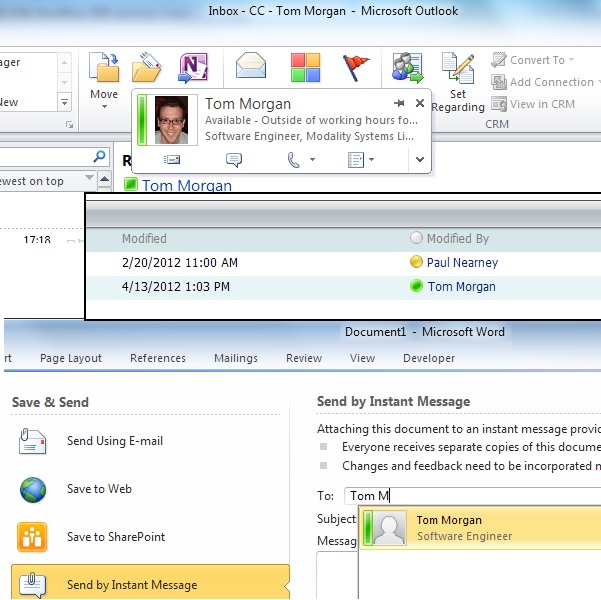 Did you know Lync is now part of Office? That means, you’ve probably already got it on your PC! Lync has been integrated into the other Office products and other line-of-business applications (like Sharepoint) so that wherever someone’s name appears their presence shows alongside, with quick links to message, call etc.
Did you know Lync is now part of Office? That means, you’ve probably already got it on your PC! Lync has been integrated into the other Office products and other line-of-business applications (like Sharepoint) so that wherever someone’s name appears their presence shows alongside, with quick links to message, call etc.
In the image I’ve shown Outlook, Sharepoint and Word integration, but there are other things you can do as well, such as present a Powerpoint slide in a Lync conference, or collaborate on slides together, remotely.
Of course, you’re not limited to the integration which Microsoft have built in. You can integrate pretty much any application you care to think of – and there are plenty where Lync integration will have an immediate, positive effect on productivity. There may also be entirely new applications which you can think of that can harness this technology, which come from people being more connected, more aware of each other and more able to collaborate.
Your Phone System
Now things get interesting! Lync can also function as a PBX replacement. What does that mean? It means thinking about your work phone in a completely different way. Ever since corporate phone systems arrived, the technology has hardly changed. Yes, the phones have changed colour: from beige to black in most cases, but still the most interesting thing you can do is transfer a call from one person to another (if you can remember the right sequenece of keys…was it #39 or #39# and if I get it wrong will I cut them off…or will they be “lost in the phone system”. Unlike everything else in our lives, phone systems haven’t been integrated with all the other technology we use: they’re always separate, doing their own thing. Lync changes that.
Did you notice the first part of my phone number in the Contact Card:
If you’re in the UK you’ll know that’s a London based number. But hang on, my location shows me in Norwich? I don’t actually have a phone on my desk – Lync is my phone system. My phone line is in London somewhere, but it jacks into a Lync server, which means that when anyone calls the number, I get it on my Lync client. So, my phone line is wherever my laptop is. Or wherever I decide to log on, which includes my mobile. Without VPNs or special network setups, or any configuration.
The first time this happened, someone from our St. Alban’s office phoned me to transfer a call from a customer. I was in Norwich, the customer was in the USA, but the call got transferred like I was sitting next to her. Because it can use the internet as its network, it lets you do geographic things which would be prohibitively expensive with a standard PBX system, like geographical transfer.
Ahh, but what about Voicemail? Lync takes that too, and sends me an email with any missed calls and any voicemail messages. When your phone system is integrated with everything else you do, you get more control to make things work in a way that’s best for you as well:
Oh, and if you’d prefer a “real” phone, why not a Lync-enabled deskphone which looks and feels like a regular phone, but places all calls through Lync, like this one from Polycom (yes, the caller’s Lync contact card flashes up on the screen, nice!): 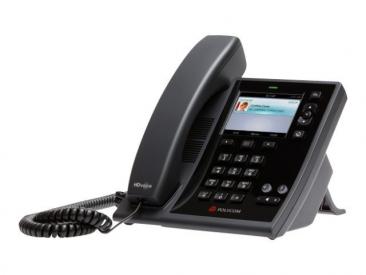
For Software Developers
Front-End Applications
Microsoft understand that in order to make a communications tool like Lync effective and useful to people, it needs to be in front of them when they need it. That means making it easy to integrate into existing Line of Business (LOB) applications, so that a person’s name in an internal ordering system is transformed into a contact card, letting users click directly from within the LOB application to make contact with the relevant person via Lync.
To make this process as easy as possible, Microsoft have created a free set of WPF and Silverlight controls (which I’ve previously talked about) to meet the need of people who just want to “Lyncify” their existing applications.
Once you start using Lync I guarantee you’ll start to see processes within your business which could be improved with Lync. The next step up from using the boilerplate controls is to automate the Lync client itself. There is a Lync client SDK which allows you to do this, automating things like accepting and making calls, adding and managing contacts, setting presence etc. For instance, if you wanted to keep your Lync “what are you doing?” status field in sync with your Yammer “share an update” field, you could do this using the Lync client SDK by writing a taskbar program which ran on the client desktop.
There’s also a special mode you can run the SDK in, called UI Suppression Mode. With this enable, the Lync client isn’t visible, so you can write a complete replacement program to perform its function. This makes it a great choice for kiosk applications, where you want to full-screen the application and control what functionality is available.
The Lync client has a browser window built into it, which applications can load with their own content. The combination of this and the capabilities of the client SDK, mean that you can bring your LOB applications into Lync.
Back-End Magic
The Front-End SDK functionality is all well and good, but it’s on the Back-End that you can do some really amazing things. Another SDK, the Unified Communications API (UCMA), allows you to write applications which appear to be contacts. That is, they appear on your contact list and you can interact with them via IM. This opens up a huge new area of possible applications: bots to automate business processes, to act as search agents, notification applications etc.
I’ve already written about UCMA applications before, so if you’re interested, see my previous blog post about writing UCMA applications.
Secure
You probably don’t care about this, but your IT Department, or your CEO does should. MSN is all very well, and in a technical sort of way, is really pretty secure. However, every message you send leaves your computer, goes over to a Microsoft sever in the USA somewhere, then comes all the way back again to your colleague on the next desk. Quite what happens to it inbetween is a bit of a mystery. It probably gets recorded somewhere.
I think it’s more in the realm of conspiracy theory to think that the secret plans you’re discussing regarding the relaunch of WonderBike will be intercepted by the evil folks at SuperScooter, but there are potential Data Protection issues at hand.
Another problem is that MSN can decide to not work, or have some scheduled maintenance, or temporary problem, normally just when you most need it. With Lync, all the messages within your company stay within your company. Put simply, there’s a server within your organisation that receives all the messages and re-routes them. The messages never leave the building. This also means that for companies where this sort of thing is important, every message sent and received can be centrally recorded and archived for posterity.
Of course, you can open up your system so your users can log in from home, or wherever they happen to be. You can also link up with other Lync users in other companies to trade messages. This is called federation, and can be managed: so, for instance, you get to decide which companies you will allow access to you and your users, and the rules. It’s very powerful though, if you have a trading partner, you can see the Presence of their staff to know when to contact them.
Scalable
If you’re worrying that maybe Lync isn’t up to the task when it comes to supporting your organisation, or that it doesn’t have enough support, you don’t need to stress. Lync is a fully supported Microsoft Office product, and has been proven to scale to tens of thousands of seats. (Microsoft has a bunch of case studies.)
The only thing I’d say is that, for anything other than a simple lab experiment or one-room office, you want to make sure you get the configuration right, otherwise you’ll either have installation problems or scale problems, so you might want to look at using a specialist consultancy to help you. Disclaimer: I work for Modality Systems, unified communications experts who have twice been awarded the Microsoft UK Unified Communications Partner of the Year Award. If you’re interested, give them a call and see if they can help. And mention my name! 🙂
More Information
Hopefully, this has whetted your appetite. I’ve tried to find some non-technical posts that go into more detail about what Lync can do for you: Firstly, the official Microsoft Lync Product Guide. It’s non-technical and covers lots of features.
There’s a huge stash of training resource in the Lync Adoption and Training Kit. Within the training kit are some short videos that show you how to perform a number of different tasks. I thought these were really good, and well produced, and tried to find them hosted online – because although you can download them, that’s one step too far for busy professionals.
There’s also a set of 17 training videos for Lync 2013.
Questions about Lync? Interested in Lync? Feel free to make contact, or see the Modality Systems website for more information about Lync deployment.





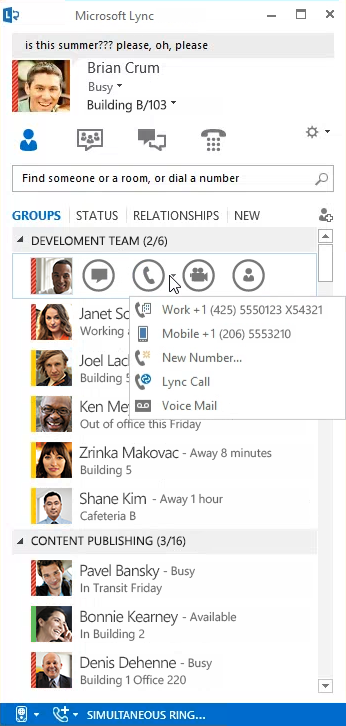
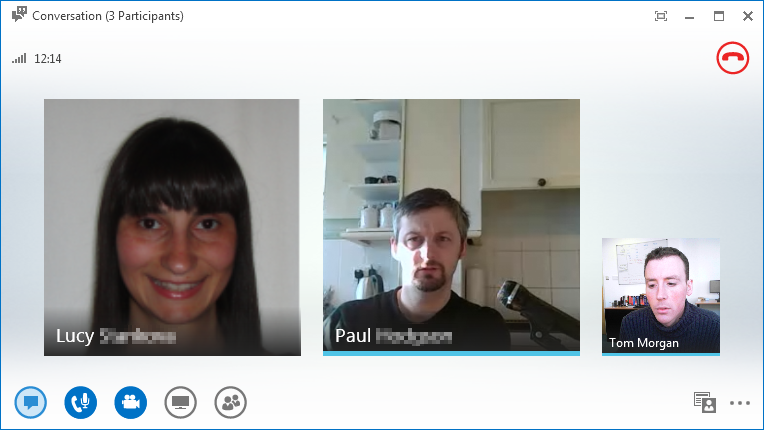
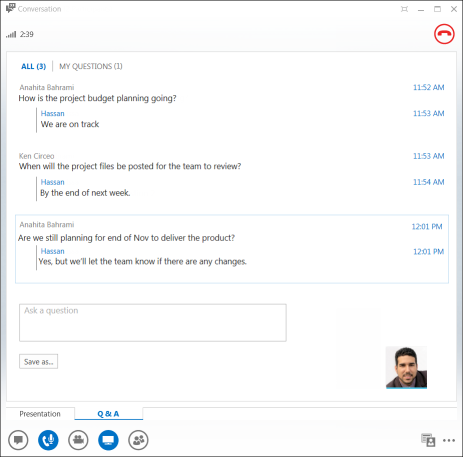

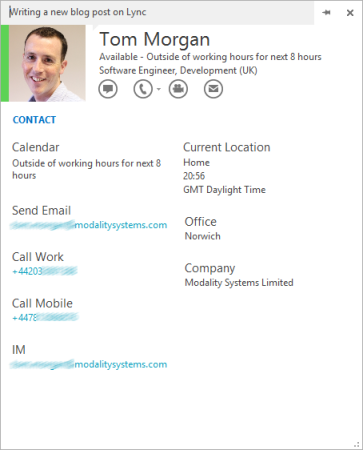


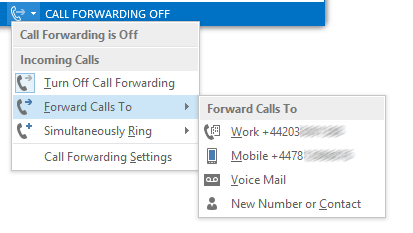







What about offnet communications and linking to other competitive packages to Lync?
very good general introduction
Hi – I have to do a quick Lync explanation tomorrow and this has been really useful. Thanks!
Very nice introduction to Lync!
Nice intro to Lync but as a google apps user it sounds like MS is still playing catchup ?
Would be great to know what Lync/ office 365 does better or as well as Google equivalents
Lync appeared on my new laptop, so I googled it to find your helpful information. I may never use it, but at least I am no longer totally in the dark about it! Thank you.
I’m sure its useful for some, but how do you disable/kill/get rid of it so it stops popping up from time to time?
Nicely explained
Thankyou Tom Morgan.
Very helpful intro. Thanks
Thanks for your post. I know its an old one, but hopefully you still get notifications of these comments. I’m an IT person, and totally unfamiliar with Lync, other than now I’ve been googling around about it. We are new to Office 365, but licensed on the Professional Plus package. That’s not a ‘full’ O365 product because we didn’t need the Exchange part. I found out later it also doesn’t include the ‘business’ one-drive with 1 TB per user. I’m wondering about Lync. I have a Lync program that installed with office. Starting it up, it only asks for a ‘Sign-in address’, no password, no configuration or anything. And sign-in fails.
To my question… to use Lync, do we have to purchase and install a Lync server? I wouldn’t expect so, or else how could the general public O365 users use it? For MSN, there are public Microsoft servers, is it the same for Lync? My Lync software, as I noted, didn’t ask me to create an account or anything. In its ‘Sign-in address’, I used my email that I have registered with my license of O365, but it didn’t ask me for a password, so must not be tied to that. I read that the Lync Server keeps the messages ‘internal’ to your company, but is that the only way to use Lync, by buying and installing a server too? Thanks!
I believe I have found my answer, in a Microsoft PDF, http://download.microsoft.com/download/8/C/7/8C7C30DA-0386-4698-8BBB-367EAC8C4352/Lync%20Licensing%20Guide%20February%202013.pdf
On page 5 it says, 1) we can buy the server and CALs, or 2) we can use Microsoft hosted servers and we buy the CALs only which can come with O365 or other Microsoft products or separately, or 3) partner hosted… which it only says contact a partner, but I assume we’d buy CALs still and probably pay a partner (but not sure why we’d pay a partner if Microsoft doesn’t charge to use their servers… maybe they do, I don’t know that much yet.)
please advise on hoe to remove linc since it is not an application I will ever use or require.
thanks Jim
Hi Jim, You should see it in your Add/Remove Programs list. If not, run the Office installer and you’ll see it in the list features where it can be un-ticked. However, if it’s a work computer and been added by your administrator you might not be able to.
Excellent!
Thanks for this. Was trying to explain Lync to someone a couple of days ago and this does a far better job than I did.
I’ve shared this with at least three people already 🙂
wow lync popped up on my comuter and i didnt know what it was i might actually use it! thanks for the info
When I put like out to lunch in what happening in Lync 2013 it doesn’t show up on the screen by my name. What do I need to do to have that show up?
Thank you
Edna
You made me read 5 paragraphs before saying what it did.
I do no use 360. Does it only work with that office version?
Hi,
I want to use the Lync Click to Call feature on IE . What are the pre requisites for that?
I want to call number from SAP CRM web based UI screens on IE.
Good info. Lucky me I came across your website by chance (stumbleupon).
I have saved as a favorite for later!